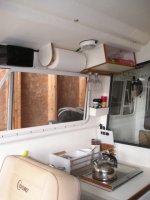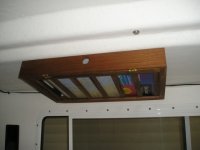hank schneider
New member
- Joined
- Mar 23, 2008
- Messages
- 123
- Reaction score
- 0
- C Dory Year
- 2006
- C Dory Model
- 23 Venture
- Vessel Name
- Ditch Witch
Hi Folks
As a general rule I don't think you should trust wood that does not float!! BC was suggested as a replacement for teak for making accessories so I found some 5/4 stock - planning to rip it and then plane it to 3/8 and 5/8 stock. I was shocked at how hard this wood is. I have basic Delta shop tool and the wood gave them a run for their money. It improved when I put new blades on the table and chop saws. Once the wood was reduced in size it was reasonable to work with.
Couple of questions
1. My Cape Cruiser has a sloped splash well that is slippery when wet - I was going to put some strips on to improve traction. Has anyone used this for exterior work? Any problems? As dense as it is I don't think water could do any harm.
2. Finishing - I was going to use oil for the interior stuff - any reason to not do the same for exterior applications.
3. Attaching - based on the factory installed stuff it looks like I'd be safe with screw penetration of about 1/2". How thick is the hull on these boats? One of the racks will go into hull material next to the drivers seat.
Thanks
Hank
As a general rule I don't think you should trust wood that does not float!! BC was suggested as a replacement for teak for making accessories so I found some 5/4 stock - planning to rip it and then plane it to 3/8 and 5/8 stock. I was shocked at how hard this wood is. I have basic Delta shop tool and the wood gave them a run for their money. It improved when I put new blades on the table and chop saws. Once the wood was reduced in size it was reasonable to work with.
Couple of questions
1. My Cape Cruiser has a sloped splash well that is slippery when wet - I was going to put some strips on to improve traction. Has anyone used this for exterior work? Any problems? As dense as it is I don't think water could do any harm.
2. Finishing - I was going to use oil for the interior stuff - any reason to not do the same for exterior applications.
3. Attaching - based on the factory installed stuff it looks like I'd be safe with screw penetration of about 1/2". How thick is the hull on these boats? One of the racks will go into hull material next to the drivers seat.
Thanks
Hank


